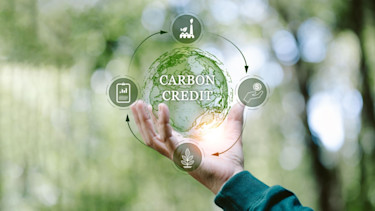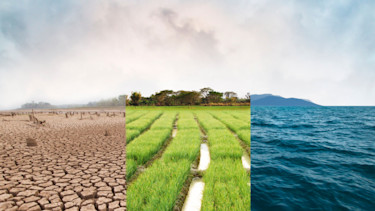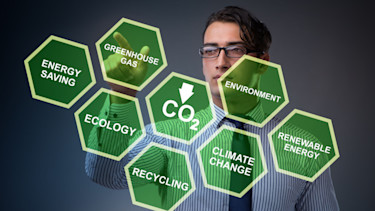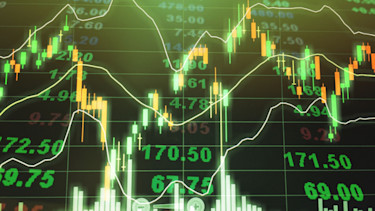Our research
Access all our publications and columns. Use the filters to easily find what content you are looking for.
Filters
All publications
6 results
ESG Economist - Scenarios shaping EU ETS prices
- Sustainability
-
Using Bloomberg's EUCPM model, we run scenarios to simulate several market and policy changes in the EU ETS market. Our baseline scenario sees EUA prices rising to €145/tCO2 by 2030 and €200/tCO2 by 2035, driven mainly by lower supply of allowances and a decline in the Total Number of Allowances in Circulation (TNAC).

ESG Economist - EU: Road to 2030 climate targets still bumpy
- Macro economy
-
Europe is striving to do its part in the effort to limit global warming. The first hurdle on the road to meeting the target of net zero GHG emissions by 2050 is meeting the EU climate and energy targets for 2030. The next hurdle is setting new intermediate targets for 2040. It is likely that chances of successfully setting a credible and sufficient 2040 target are influenced by the chances of meeting the 2030 target, as climate action will have to be stepped up during the period 2030-2040 in case the 2030 targets were missed. This note focuses on the probabilities of meeting the 2030 targets, based on the European Commission’s evaluation of the latest National Energy and Climate Plans (NECPs) of the individual Member States.

What to look for at COP29: the cost of delay and the Trump victory
- Sustainability
-
Over the past year, very little progress was made in the ambition and implementation of policies to reduce greenhouse gas emissions globally. At the beginning of next year, countries have to submit their new national commitments to reduce emissions according to the global targets set out in the Paris Agreement (NDCs), with the end-point of the targets extended to 2035, from 2030 . To keep the Paris goals within reach all countries, in particular the G20, have to overperform on their current 2030 climate targets. The new quantifiable goal for climate finance will need to be vastly more ambitious as well as more concrete. The Trump victory in the US could have significant consequences for global climate policy, which could already have an impact on progress at COP29.

ESG Economist - Where are carbon prices heading this winter?
- Sustainability
-
The EU-ETS is the flagship climate policy driving the transition of high emission sectors in the EU. There are several drivers affecting the European Union Allowance (EUA ) price both in the short and long term. We use our in-house data driven model to sketch the outlook for EUA prices for this winter under a baseline, upside and downside carbon price scenarios. The scenarios differ in the short term dynamics of supply, demand, weather conditions, and geopolitical uncertainty affecting energy prices and economic activity. We expect EUA prices is to range between 64 and 73 €/tCO2 under the baseline scenario and have a range of 72-80 €/tCO2, and 45-61 €/tCO2, under the upside and downside carbon price scenarios, respectively.

ESG Strategist - Assessing the impact of joining the NZBA on banks’ bond spreads
- Sustainability
-
In April 2021, the United Nations Environment Programme Finance Initiative (UNEP FI) formed the Net-Zero Banking Alliance (NZBA), an initiative that brings together banks across the globe committed to align their lending, investment, and capital markets activities with net-zero greenhouse gas emissions by 2050. By signing the NZBA, banks are committing, amongst other things, to (1) transition the operational and attributable GHG emissions from their lending and investment portfolios to align with pathways to net-zero by 2050 or sooner, and, (2) within 18 months of joining, set targets for 2030 or sooner, and a 2050 target, with intermediary targets to be set every 5 years from 2030 onwards. By committing to a net-zero pathway and subsequently setting decarbonization targets, a bank is not only signalling its commitment to sustainability to investors, but is also committed to decrease its exposure to climate risks. This can be done by either divesting from polluting companies or by assisting its high-emitting clients to reduce their own emissions. As such, signing to the NZBA might be supportive of the bank’s outlook, and, as consequence, of the banks’ bond spreads. In this note, we aim to understand whether signing to the NZBA (referred to as “the event” from now onwards) had an effect on signatory banks’ bond spreads. Using a fixed effects model, we calculate the direction and significance of signing to the NZBA on banks’ bond spreads. The note follows as: in the second section, we explain the sample and the methodology. In the third section, we present the results and interpret them, and elaborate on the limitations of our research. And, in the final section, we conclude.

Still a long road to go for EU banks to become greener and less exposed to transition risks
- Sustainability
-
Using the Capital Requirements Regulation (CRR) Pillar 3 reports by banks in the EU, we assess their loan portfolios’ exposure to sectors that highly contribute to climate change, their “greenness” as well as their transition risk. We conclude that within the sample analyzed, 70% of the loan exposure of European banks is towards sectors that highly contribute to climate change, with particular concentration towards real estate (27%) and manufacturing (13%). In line with that, banks disclose that, on average, a mere 0.7% of the loan exposure is towards activities that substantially contribute to climate change mitigation. At the same time, there does not seem to be much difference between the average maturity of loans towards sectors that highly contribute to climate change and the average maturity of the loan book. Using the Alessi et Battiston (2023) methodology, we also calculate these banks’ Taxonomy-alignment coefficients (TAC) and Transition-exposure coefficients (TEC). Our analysis indicates that Nordic banks have a higher TAC when compared to the remaining of the sample, indicating a higher “greenness”, but also a higher TEC, contradictorily indicating a higher exposure to transition risks. The above highlights the importance of distinguishing between a bank’s existing “greenness” and their exposure to transition risks.
